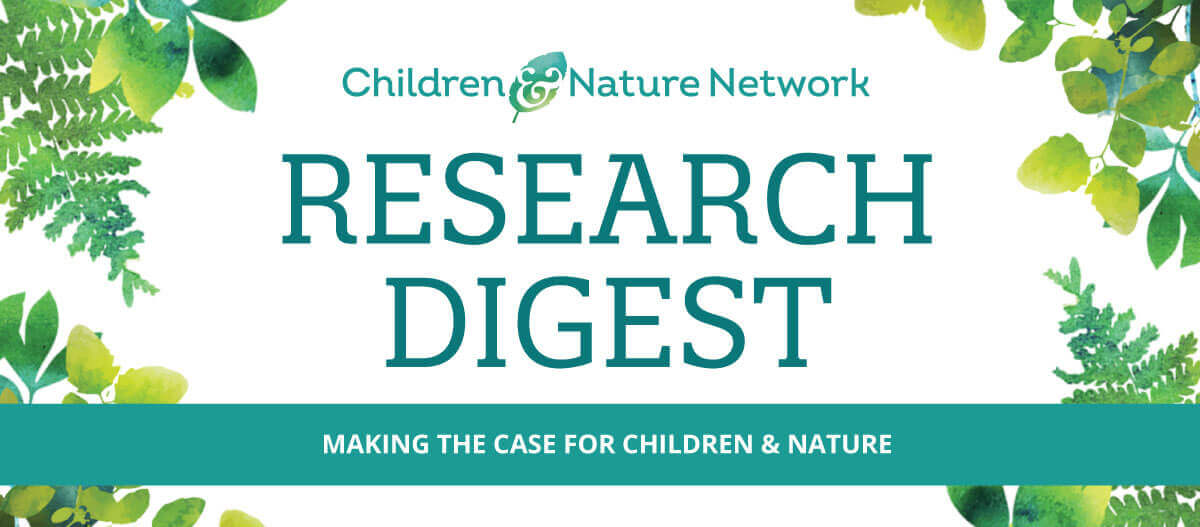Diversity and Pluralism in Research
Research in the behavioral and social sciences is overwhelmingly informed by globally non-representative societies, with an over-representation of white participants. Many studies even fail to report participants’ ethnicities. The results often reflect a white Western-World bias which can reinforce narrow views of such social concerns as mental health, well-being, appropriate behavior, the human/nature connection, and even nature itself.
While the studies in this section of the Digest show mixed results, some of the studies support the idea that children’s relationships with nature may differ across cultures and ethnicities. Any universal claims about the psychological and/or behavioral aspects of such relationships may, therefore, be misleading. The benefits of nature engagement may differ not only by populations but by individual characteristics, as well. Such differences call for attention to heterogeneity within groups.
Gender and temperament can influence how and to what extent children experience the happiness benefit associated with exposure to nature
Information provided by 410 Chinese children (age 7-12) and their parents showed that boys’, but not girls’, exposure to nature was significantly linked with happiness. Levels of effortful control (a central component of temperament) influenced this association. For boys with lower levels of effortful control, lower levels of nature exposure were associated with lower levels of happiness. Higher levels of nature exposure for these same boys, however, were associated with higher levels of happiness.
Cui & Yang, 2021. Association between connection to nature and children’s happiness in China: Children’s negative affectivity and gender as moderators.
Access Study
Positive effects of green space on well-being differ by ethnicity
More than 2,000 mothers living in a multicultural, deprived, urban area of the United Kingdom completed a mental well-being assessment of their four-year-old children. A subset also reported on their use of and satisfaction with neighborhood green space. Results showed a significant association between availability of quality green space and behavioral difficulties among South Asian children but not among white British children. This research highlights the importance of identifying subgroups for whom interventions to promote green space availability and use might be most effective.
McEachan et al., 2018. Availability, use of, and satisfaction with green space, and children’s mental wellbeing at age 4 years in a multicultural, deprived, urban area: Results from the Born in Bradford cohort study.
Access Study
The relationship between greenness and birth weight may differ by ethnicity
Data regarding over 10,000 births in the United Kingdom between 2007-2010 showed that increased greenness around a mother’s home at the time she gives birth is associated with increased birth weight. When the data was analyzed by ethnicity, however, the association was true for white British participants but not for those of Pakistani origin.
Dadvand et al., 2014. Inequality, green spaces, and pregnant women: Roles of ethnicity and individual and neighbourhood socioeconomic status.
Access Study
Time in nature may have a larger influence on urban children’s connectedness to nature than cultural background
Over 1,400 fourth graders with different cultural backgrounds in Germany completed a survey addressing their connectedness to nature, their frequency of visits to a forest, and their parents’ country of origin. Results showed that residential area (rural/urban) and cultural background had no effect on their connectedness to nature. Time spent in forests, however, was positively linked to how the students saw themselves as being connected to nature.
Frankel, Sellmann-Risse & Basten, 2019. Fourth graders’ connectedness to nature – Does cultural background matter?
Access Study
Children’s relationship with nature may differ based on where they live
This study used children’s drawings and follow-up interviews to investigate how children from two dramatically different backgrounds perceive and value nature. One group belonged to an Indigenous society in Brazil and lived in a rich biodiverse environment. The other group lived in a highly urbanized section of New York City. Children living in biodiverse environments showed a more positive and integrated view of the human-nature relationship than children living in urbanized settings.
Profice, 2018. Nature as a living presence: Drawings by Tupinamba’ and New York children.
Access Study
Nature connectedness can be vastly different for Indigenous and Western children
Results of a survey completed by 294 children living in highly contaminated Bedouin villages in Israel’s Negev desert indicate that they found a high level of enjoyment in nature, but less so for direct, physical experiences in their immediate environment. The children’s awareness of pollution in their environment played a role in their negative experiences and attitudes towards nature as did consequences of harsh weather conditions.
Sedawi, Assaraf & Reiss, 2020. Indigenous children’s connectedness to nature: The potential influence of culture, gender and exposure to a contaminated environment.
Access Study





